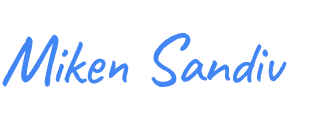Discover essential strategies for internal linking for SEO. Learn how to strengthen your website’s structure, improve user experience, and boost your rankings in this comprehensive guide.
In the intricate world of SEO, internal linking emerges as a powerful yet often underutilized strategy. It is the backbone of any thriving website, serving as a roadmap for both users and search engines. When executed correctly, internal linking can significantly boost site visibility, enhance user experience, and elevate your content in Google’s eyes.
This guide is tailored for SEO professionals, content marketers, and website owners looking to harness the full potential of internal linking for SEO optimization.
Understanding Internal Linking

Internal linking connects one page of a website to a different page on the same site. This link structure does more than just aid navigation; it helps define the architecture and hierarchy of your site, distributing page authority and ranking power throughout your site.
Why Are Internal Links Important to Google?
For Google, internal links are crucial as they provide pathways for search engine crawlers to discover and index pages. They act as signals indicating the content’s value, relevance, and relationship to other pages, which in turn aids in understanding site structure and content importance.
Best Practices for Internal Linking for SEO
Here’s how to optimize your website’s internal linking strategy:
Determine the Ideal Structure for Your Site
A well-structured site resembles a pyramid, with the homepage at the top, followed by main categories, subcategories, and individual pages or posts. This hierarchy ensures a logical, navigable path for both users and search engines.
Decide What Your Most Important Content Is
Known as “cornerstone content,” these are the pages or posts you most want to rank high in search results. Ensuring these have the most internal links pointing to them will signal their importance to search engines.
Choosing Anchor Text Wisely
Anchor texts are visible, clickable words in a hyperlink. Using descriptive, keyword-rich anchor text helps Google understand the linked page’s topic, but avoid over-optimization which can lead to penalties.
Strategically Distributing Links
Ensure each important page is reachable through internal links. However, more isn’t always better. A barrage of internal links can dilute value and confuse both users and search engines.
Link Hierarchical Pages Effectively
Maintain a clear and logical site structure by linking hierarchically, ensuring subpages link back to their main category pages, reinforcing site architecture.
Encourage Exploration with Fresh Content Links
Regularly update older content with links to new pages and vice versa. This encourages visitors to explore your site further and signals content relevancy to search engines.
Utilizing Tools for Optimization
Several tools can assist in crafting a well-optimized internal linking structure. Plugins like Yoast SEO provide insights into your linking strategies, while tools like Screaming Frog SEO Spider can help identify linking opportunities and issues.
Internal Linking and Content Strategy
A robust content strategy includes a plan for internal links. Anticipating future content and knowing how it will fit within your site’s structure can set the stage for effective internal linking, ensuring every piece of content serves a purpose and is interconnected.
Measuring Success
Using tools like Google Analytics and Google Search Console, monitor how changes to your internal linking strategy affect traffic, bounce rates, and overall engagement. Successful internal linking should result in increased user engagement and improved search engine rankings.
The Future of Internal Linking
With advancements in AI and machine learning, search engines are becoming smarter at contextualizing and valuing internal links. It’s essential to stay informed on these changes, adapting your strategies to continue benefiting from internal linking.
Link Whisper for Building Smart Internal Links

One innovative tool that stands out for internal linking optimization is Link Whisper. This Plugin simplifies the process of adding smart, contextually relevant internal links to your content, leveraging AI to suggest link opportunities that improve site structure and SEO.
Features and Benefits of Link Whisper
- Intelligent Suggestions: Offers automated suggestions for internal links based on content relevance.
- Easy Management: Quickly add or remove links across your site, saving valuable time.
- SEO Improvement: Helps distribute link equity effectively, boosting your most important pages.
- Improved User Experience: Enhances user experience by providing additional resources and information within your content.
- Cost-effectiveness: Affordable pricing for small businesses and bloggers, with the option to upgrade as your site grows.
Conclusion
Internal linking is an essential aspect of SEO and website optimization that should not be overlooked. By incorporating a solid internal linking strategy, continuously
Conclusion
Internal linking is not just an SEO technique; it’s a foundational element of a successful website strategy, deeply intertwined with user experience and site architecture. By adopting the best practices outlined in this guide and considering tools like Link Whisper, you can create a network of links that not only guides users but also propels your pages higher in search rankings.
Start refining your internal linking strategy today, and watch as your site begins to climb the SEO ladder.
